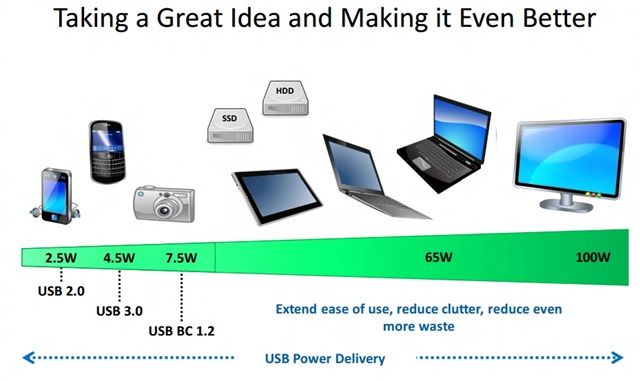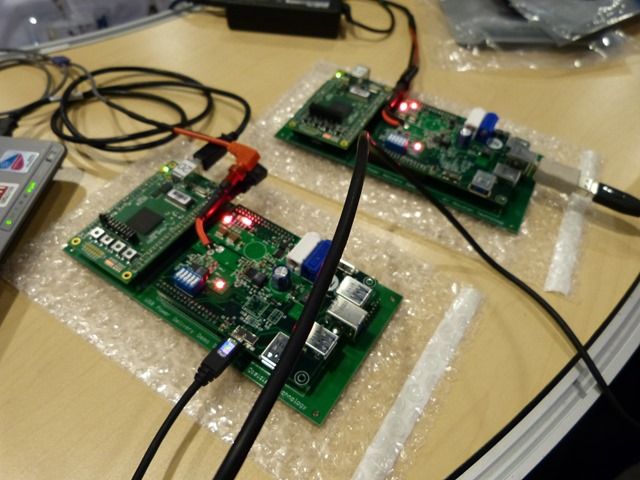The adoption of Micro-USB as a charging port standard on smartphones was a breakthrough for the consumer but we’re still left with the same problem on our other portable electronics. Example: I just spent 10 minutes searching for a power adaptor for a Tablet here in the office. What if we could do the same for portable electronics as we did for smartphones? Power over USB (or USB Power Delivery as it’s officially known) looks like it could be the answer. 
USB Power Delivery has been in the works for a while but the standard is now complete and products are expected towards the end of this year. It looks as simple, for the end user, as it could be.
Power of up to 100W (voltages vary through range at 5, 12 or 20V) can be requested by clients and delivered by hubs. There’s no change to the connector spec and power delivery direction is also negotiated to there’s no messing around with plugging and unplugging cables. Existing cables can be used to deliver up to 7.5W but new cables would be needed for the higher delivery profiles.
I saw it working at IDF2012 and although it looks a bit messy in the demo, it worked; a laptop was charged through a chain of USB PD devices.
One element of this that I find interesting is that it helps make the USB 3.0 docking station completely a one-cable solution and given the quality of the existing screen, Ethernet and sound-capable docking stations from manufacturers such as Tragus, Lenovo and Toshiba (my test here) there’s going to be less need for expensive Thunderbolt options for most Ultrabook customers. In fact, build-your-own docks based off a USB3.0 PD Hub could be a reality soon. We’ve got our fingers crossed that there will be Ultrabooks in 2013 that contain this technology. I’d much rather see this than wireless charging, wouldn’t you?
More at USB.org
Via IDF2012 session.













I hope this becomes standard for charging any device that requires less than 100 W of power. Hopefully companies put more focus on this than wireless charging.